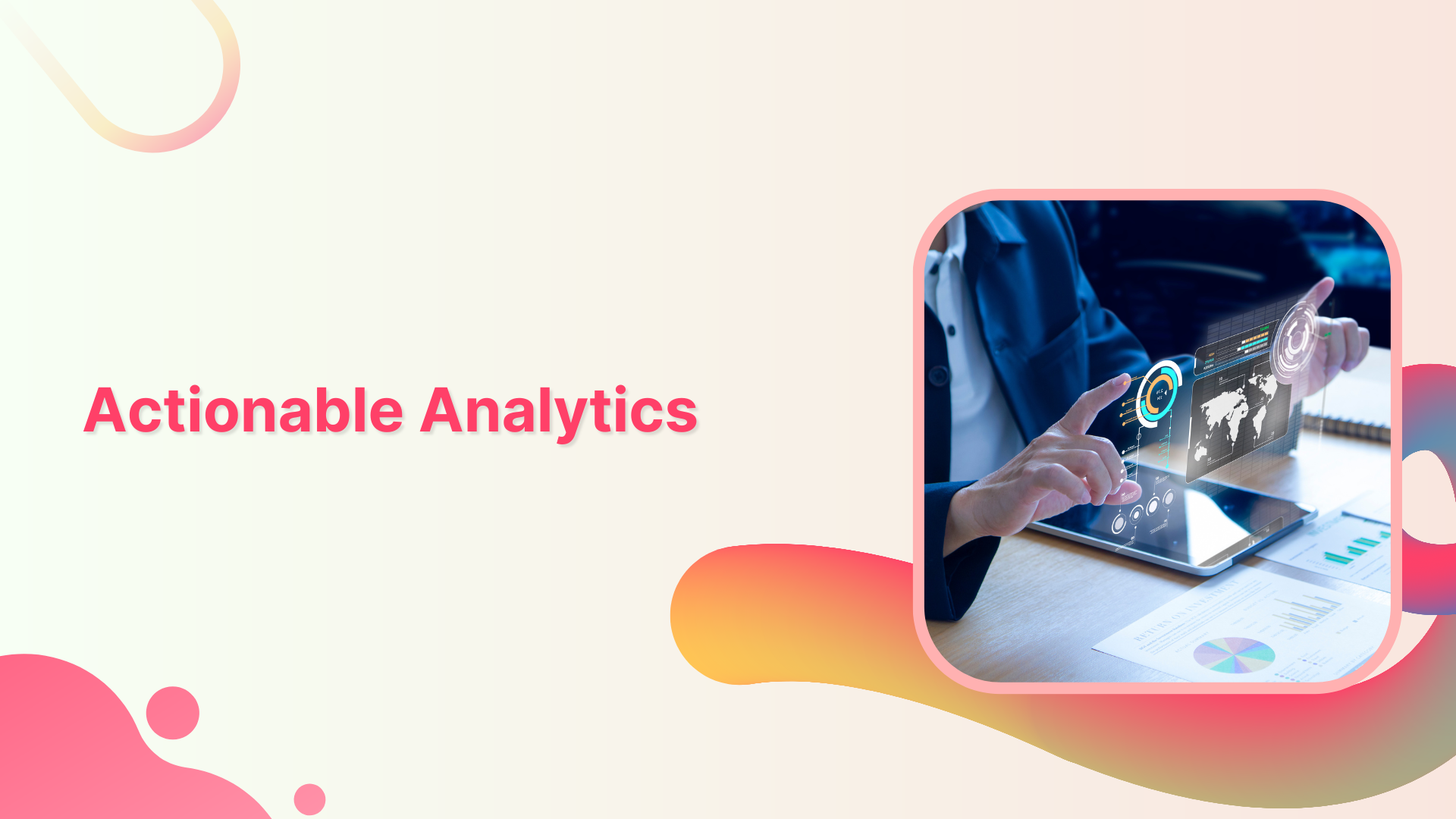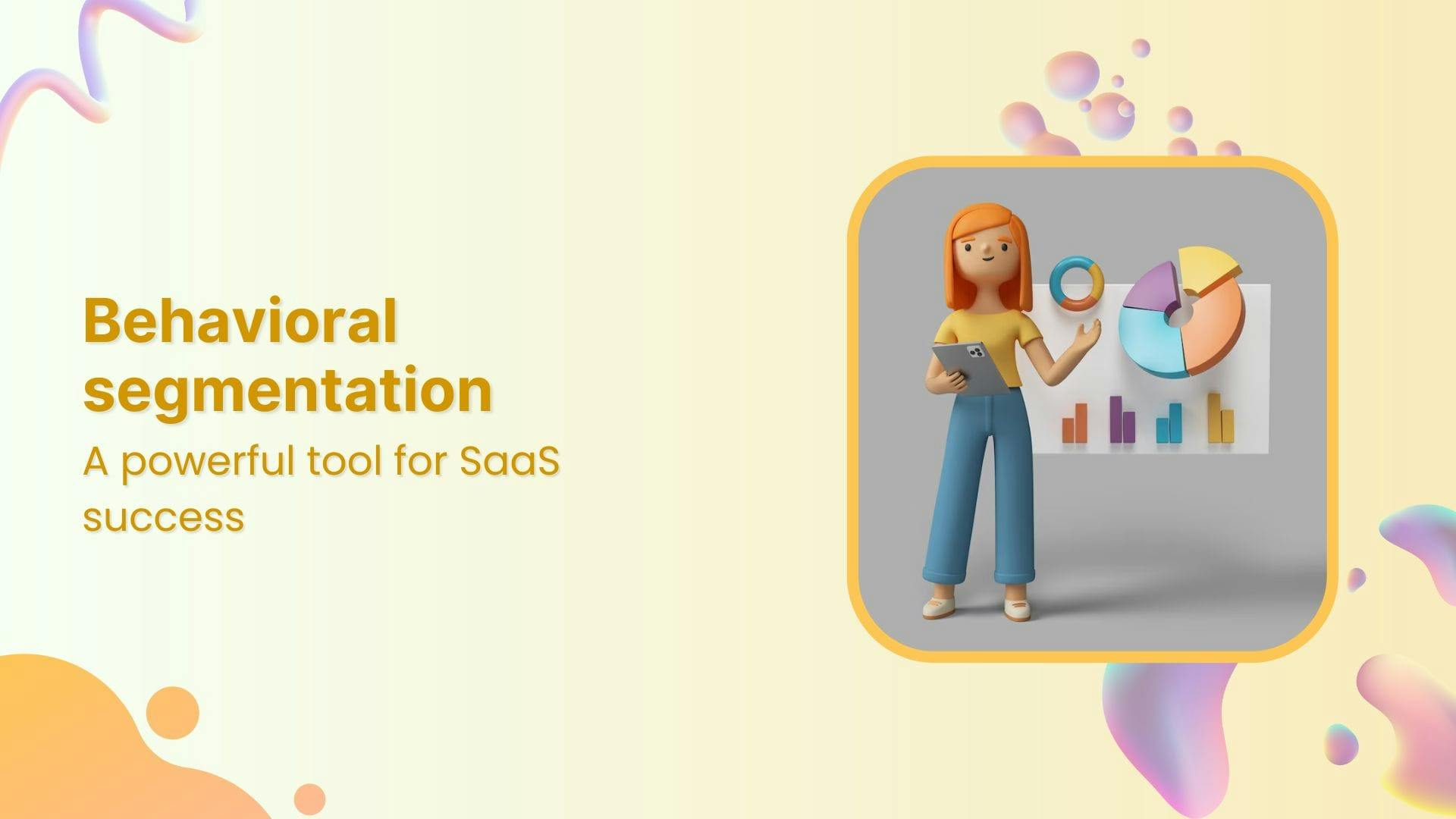
Table of contents
Actionable Analytics: Turn Insights into Results
Aug 29, 2023
6 mins read
Actionable analytics is the process of using data insights to inform and drive business decisions. It involves analyzing data from various sources, such as website analytics, social media metrics, and customer feedback, to identify patterns, trends, and opportunities for improvement. By turning these insights into actionable recommendations, businesses can make informed decisions that drive growth and revenue.
Focusing on the right metrics is essential to make the most of actionable analytics. This requires a deep understanding of your business goals and the key performance indicators (KPIs) most relevant to achieving those goals. For example, an e-commerce business might focus on metrics such as conversion rate, average order value, and customer lifetime value.
What is Actionable Analytics?
Actionable analytics refers to the insights and information that can be extracted from data to inform and drive business decisions. The goal of actionable analytics is to transform data into actionable recommendations that businesses can use to optimize their operations, improve customer experiences, and drive growth and revenue.
Analytics must provide clear, specific, and relevant insights that can be acted upon to be considered actionable. This requires a deep understanding of the business goals, key performance indicators (KPIs), and data sources most relevant to achieving those goals.
Actionable analytics can be derived from various data sources, including website analytics, social media metrics, customer feedback, sales data, and more. By analyzing this data, businesses can identify patterns, trends, and opportunities for improvement and use this information to make informed decisions about everything from marketing campaigns to product development.
In short, actionable analytics is crucial for any business looking to stay competitive in today's data-driven marketplace. By leveraging insights from data, companies can optimize their strategies, improve their performance, and ultimately drive success.
How do actionable analytics differ from traditional analytics and reporting methods?
Actionable analytics differ from traditional analytics and reporting methods in several key ways.
- Firstly, traditional analytics and reporting methods focus on data collection and analysis rather than taking action based on the insights obtained from the data. In contrast, actionable analytics is specifically designed to provide insights that can be acted upon to drive business outcomes.
- Secondly, traditional analytics and reporting methods often rely on retrospective analysis of historical data, whereas actionable analytics focus on real-time insights that can inform decision-making in the present. This allows businesses to be more agile and responsive to changing market conditions.
- Thirdly, traditional analytics and reporting methods may be focused on vanity metrics that don't necessarily align with the business goals. In contrast, actionable analytics focus on the key performance indicators (KPIs) most relevant to driving business outcomes and achieving success
- Finally, actionable analytics often involves more than just data analysis - they require a deep understanding of the business goals, the customer needs, and the industry landscape. This holistic approach helps businesses to identify trends, patterns, and opportunities that may not be immediately obvious from the data alone.
In short, while traditional analytics and reporting methods have their place, actionable analytics represent a more proactive and strategic approach to data analysis that can help businesses to drive growth, optimize their operations, and stay competitive in today's data-driven marketplace.
The benefits of using actionable analytics
Using actionable analytics for business decision-making and strategy development offers several benefits that can help businesses to optimize their operations, improve their customer experiences, and drive growth and revenue. Some of these benefits include:
- Data-driven decision-making: Businesses can make decisions based on data rather than guesswork or intuition by leveraging actionable analytics. This helps to ensure that decisions are aligned with the business goals and have a higher chance of success.
- Improved customer experiences: Businesses can identify pain points and areas for improvement in the customer journey by analyzing customer feedback and behavior. This can help to improve customer satisfaction and loyalty.
- Increased operational efficiency: By analyzing operational data, businesses can identify bottlenecks and inefficiencies in their processes and take steps to optimize them. This can lead to cost savings and improved productivity.
- Better marketing strategies: Businesses can identify and optimize the most effective spending by analyzing marketing data. This can lead to increased ROI and more efficient use of resources.
- Competitive advantage: By leveraging actionable analytics to inform their strategies and decision-making, businesses can gain a competitive edge over competitors who may need to use data to the same extent.
In short, the benefits of using actionable analytics for business decision-making and strategy development are numerous and far-reaching. Businesses can improve their performance, increase revenue, and achieve long-term success by making data-driven decisions and optimizing their operations.
Critical components of actionable analytics
The critical components of actionable analytics are as follows:
- Relevant Metrics: The first step in actionable analytics is identifying the most relevant metrics for the business goals. This requires a deep understanding of the business goals, the key performance indicators (KPIs), and the data sources most relevant to achieving those goals.
- Accurate Data: The accuracy and reliability of data are critical to actionable analytics. The data should be collected and processed consistently, and any discrepancies or errors should be identified and corrected.
- Data Visualization: Data visualization is a critical component of actionable analytics as it helps convey complex data insights clearly and concisely. This allows decision-makers to quickly and easily understand the senses and take action based on them.
- Real-Time Analysis: Real-time data analysis is essential for actionable research, allowing decision-makers to respond quickly to market or customer behavior changes. This requires using tools and technologies that provide real-time insights and alerts.
- Actionable Insights: The insights derived from data should be actionable and provide clear recommendations for improving business performance. This requires a deep understanding of the business goals, the industry landscape, and customer behavior.
- Collaboration and Communication: Collaboration and communication are critical components of actionable analytics as they ensure all stakeholders are aligned and working towards the same goals. This requires tools and processes to facilitate communication and collaboration across teams and departments.
Actionable analytics is a complex process that involves several key components, including relevant metrics, accurate data, data visualization, real-time analysis, actionable insights, and collaboration and communication. By leveraging these components effectively, businesses can drive growth and revenue by making data-driven decisions and optimizing their operations.
Best practices for integrating and analyzing different types of data to drive action
Integrating and analyzing different data types is critical for deriving actionable insights to drive business outcomes. The following are some best practices to keep in mind when integrating and analyzing different types of data:
- Use a centralized data repository: Integrating data from different sources requires a centralized data repository to bring all the data together in one place. This makes it easier to analyze the data and identify patterns and trends.
- Clean and preprocess data: Before integrating data, it is essential to clean and preprocess the data to ensure that it is consistent and accurate. This may involve standardizing data formats, removing duplicates, and correcting errors.
- Choose appropriate analytical tools and techniques: Different data types may require different analytical tools and techniques. It is essential to choose the proper tools and methods for the specific types of data being analyzed.
- Use visualization to communicate insights: Visualization can be an effective way to share insights and identify patterns and trends in the data. This can help decision-makers to understand the insights more efficiently and take action based on them.
- Focus on the most relevant data: Not all data is equally important. It is essential to focus on the data most pertinent to the specific business goals and objectives and to prioritize the data most likely to drive action.
- Combine data with domain expertise: Combining data with domain expertise can provide additional context and insights that may not be immediately apparent from the data alone. This requires collaboration between data analysts and subject matter experts.
By following these best practices for integrating and analyzing different data types, businesses can derive actionable insights that drive business outcomes. This requires a deep understanding of the available data sources, analytical tools, domain expertise, and a willingness to learn continuously and adapt to changing business needs.
FAQs
- What is an actionable insight?
- What is an example of an actionable insight?
An actionable insight is a valuable and specific piece of information extracted from data analysis that provides clear guidance on making informed decisions or taking practical steps to achieve a desired outcome. It goes beyond surface-level data and provides a deeper understanding of trends, patterns, or correlations within the data.
Actionable insights can be generated from customer feedback. If customers of a software product state that they prefer a competitive offering because it's twice as fast, then an actionable insight, such as the need to improve software speed, can be directly drawn.

Know what's happening at every touchpoint of your users’ journey with AI-powered analytics.
It's 100% Free to Try!


